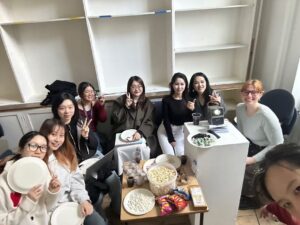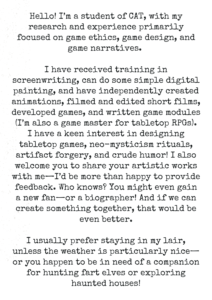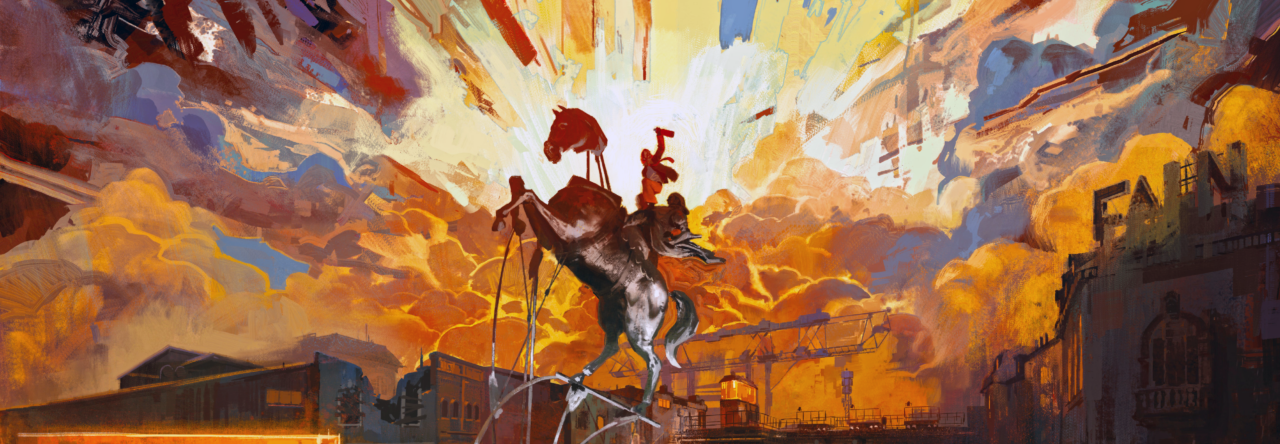About Knowledge
This week’s theme centered around “Publishing as Curating.”
The session prompted me to reconsider the role of publications in contemporary curatorial practices — no longer merely supplementary materials or records, but independent curatorial spaces with their own expressive power. Publications can extend the discussion around artworks beyond the temporal and spatial limits of exhibitions, reshaping artistic discourses through various media forms.
As Louise O’Hare has pointed out, publishing should be recognized as a distinct field of theory and practice, not merely an extension of art history or exhibition studies (O’Hare 2020).
A publication not only carries the artworks but also reflects the curator’s understanding and engagement with the artworks, the art system, and the broader social context.
Gradually, I realized that publishing expands the boundaries of curating — allowing curators to construct ongoing responses to artworks and their social environment through text, images, and sound, beyond the limitations of physical exhibition spaces.
About the Discussion
(Response to Dr JL’s Question)
During our small group discussions, Dr. JL raised a very thought-provoking question: if curators control the publishing process, is there a risk of distorting the artists’ original intentions? At the time, I was not quick enough to articulate my thoughts fully. However, after conducting further research, I would like to offer a more considered response here.
Firstly, from a legal standpoint, artists hold copyrights, not absolute ownership over the ideas within their works. As Craig Dworkin argues in his exploration of textual theory, copyright protects the expression of ideas, not the ideas themselves (Dworkin 2013).
Therefore, once a work enters the public domain, its ideas can be quoted, reinterpreted, or transformed by others. While the artist’s right to attribution should be respected, attribution does not imply monopolistic control over all possible readings and re-presentations.
Secondly, artistic creation has never been a purely isolated act; it is always shaped by complex intersections of social, cultural, and technological forces. Walter Benjamin famously noted that every cultural product bears the imprint of its production conditions (Benjamin 1936).
Thus, treating artworks as entirely independent and regarding curatorial or publishing reinterpretations as “distortions” is itself an oversimplification of the mechanisms of cultural production.
Finally, if an artist feels dissatisfied with how their work is reinterpreted through publishing, they are fully entitled to respond with their own voice. Such responses are themselves part of the broader cultural dialogue.
Even if curators or publishers inadvertently introduce interpretive shifts, their work should not be automatically subjected to moral condemnation — they are also engaging in labor and expression.
Of course, I do not deny that the publishing system (including curatorial publishing) has its systemic problems, such as the capitalization of copyright, the concentration of archival power, and the overpackaging of artists.
Nevertheless, I adhere to a text-centered perspective: once an artwork is created, its meaning becomes open, fluid, and cannot be permanently monopolized by any single authorial figure.
About Collective
This week, our Collective organized a casual and enjoyable film screening session, initiated by Zi, who brought a selection of contemporary art-related videos. Special thanks to Sarah, who not only borrowed a projector but also designed a beautiful poster for the event.
During the screening, everyone presented short films they had prepared. I showed a one-minute experimental animation called Qanun. The film constructed a richly imaginative world using vivid colors and flowing forms, strongly imbued with an Eastern aesthetic.
While watching, I couldn’t help but reflect: this work neither fits the typical Western expectations of installation-based elements nor delivers an overt socio-political statement. Instead, it leaves ample open space for imagination.
This made me question — within the Scottish contemporary art context, would such a piece still be recognized as “contemporary art”?
I gradually realized that there might be subtle but important differences between Chinese and Scottish conceptions of contemporary art.
This cross-cultural interpretive gap has been a recurring — and sometimes challenging — issue in my curatorial studies.

collective II
About My Project
This week, our Collective also had the opportunity to meet several students from the Contemporary Art Practice program. They were not only incredibly talented but also brimming with passion.
One project that left a deep impression on me was by a student from India. She transformed human hair into industrial-style objects and presented them as packaged commodities.
This idea struck me as both highly unique and a powerful articulation of her feminist critique — an impressive materialization of her conceptual declaration.
However, because there were so few of them, the event felt somewhat like a formal interview session, putting a lot of pressure on the participants.
I sincerely hope that in the future we can create more relaxed settings for such exchanges, because encountering these diverse practices from different cultural backgrounds is profoundly inspiring for my own curatorial thinking.
Lastly — I even designed and printed business cards for the occasion! I thoroughly enjoyed bowing politely while handing out my cards.
By the end of the meeting, I had given away all my cards, and many of them added me on social media.
I genuinely hope that someday, these new connections will lead to exciting collaborations!

My business card(A)

My business card(B)
—–
Reference
-
Benjamin, Walter. The Work of Art in the Age of Mechanical Reproduction. 1936. Translated by Harry Zohn. London: Penguin Books, 2008.
-
Dworkin, Craig. No Medium. Cambridge, MA: MIT Press, 2013.
-
O’Hare, Louise. “Artists at Work: Nick Thurston.” Afterall. Accessed March 2025. https://www.afterall.org/articles/artists-at-work-nick-thurston/.



Leave a Reply